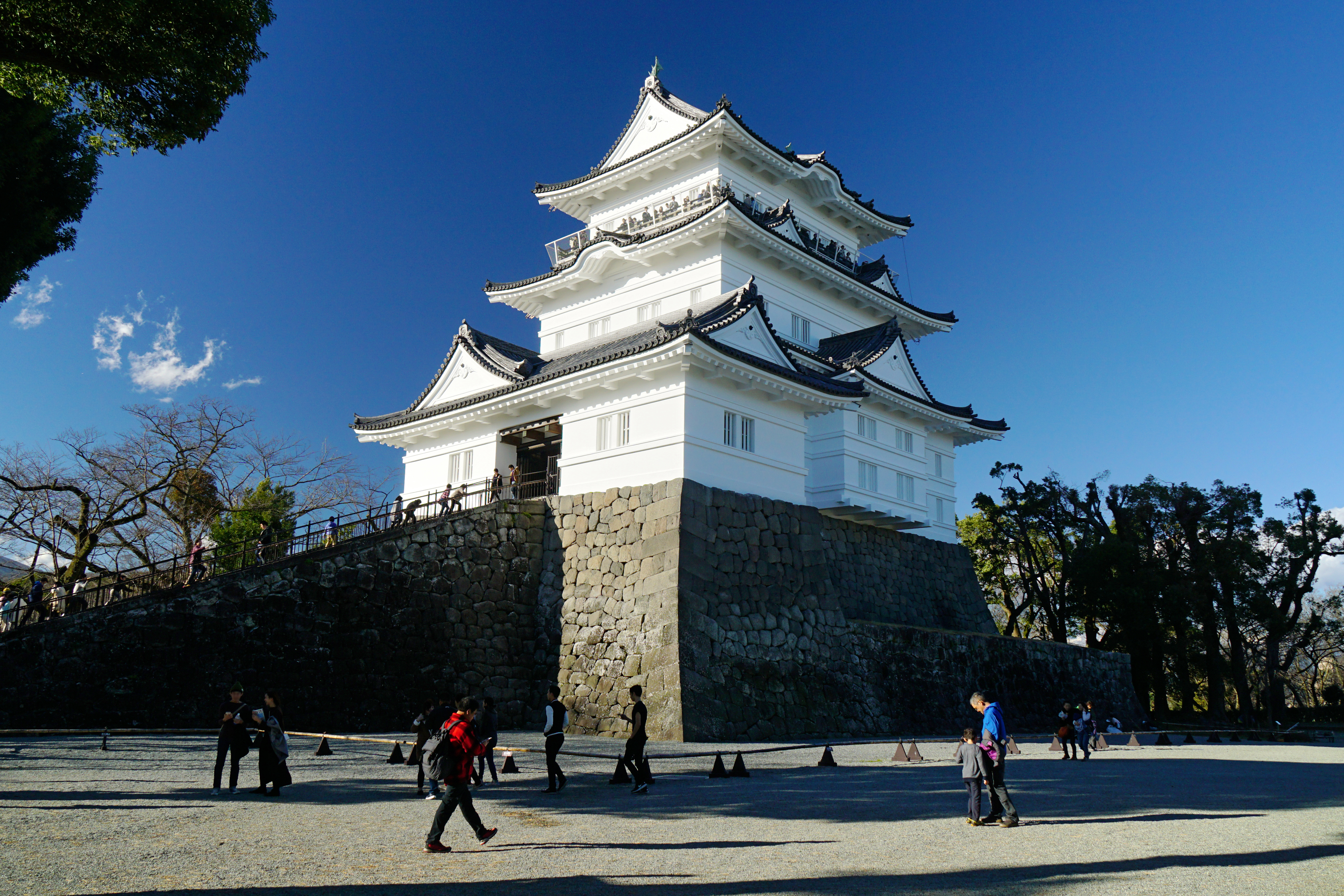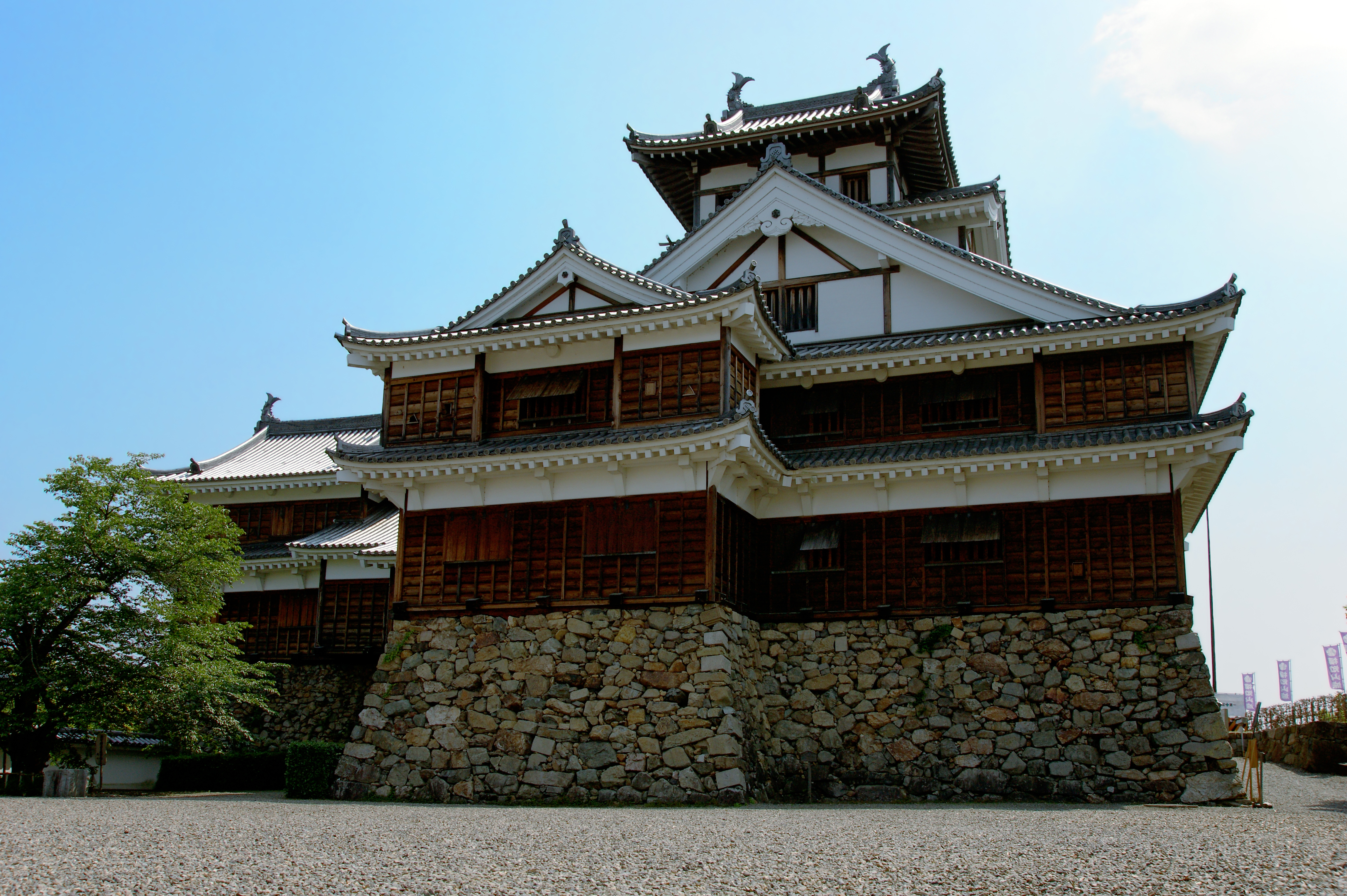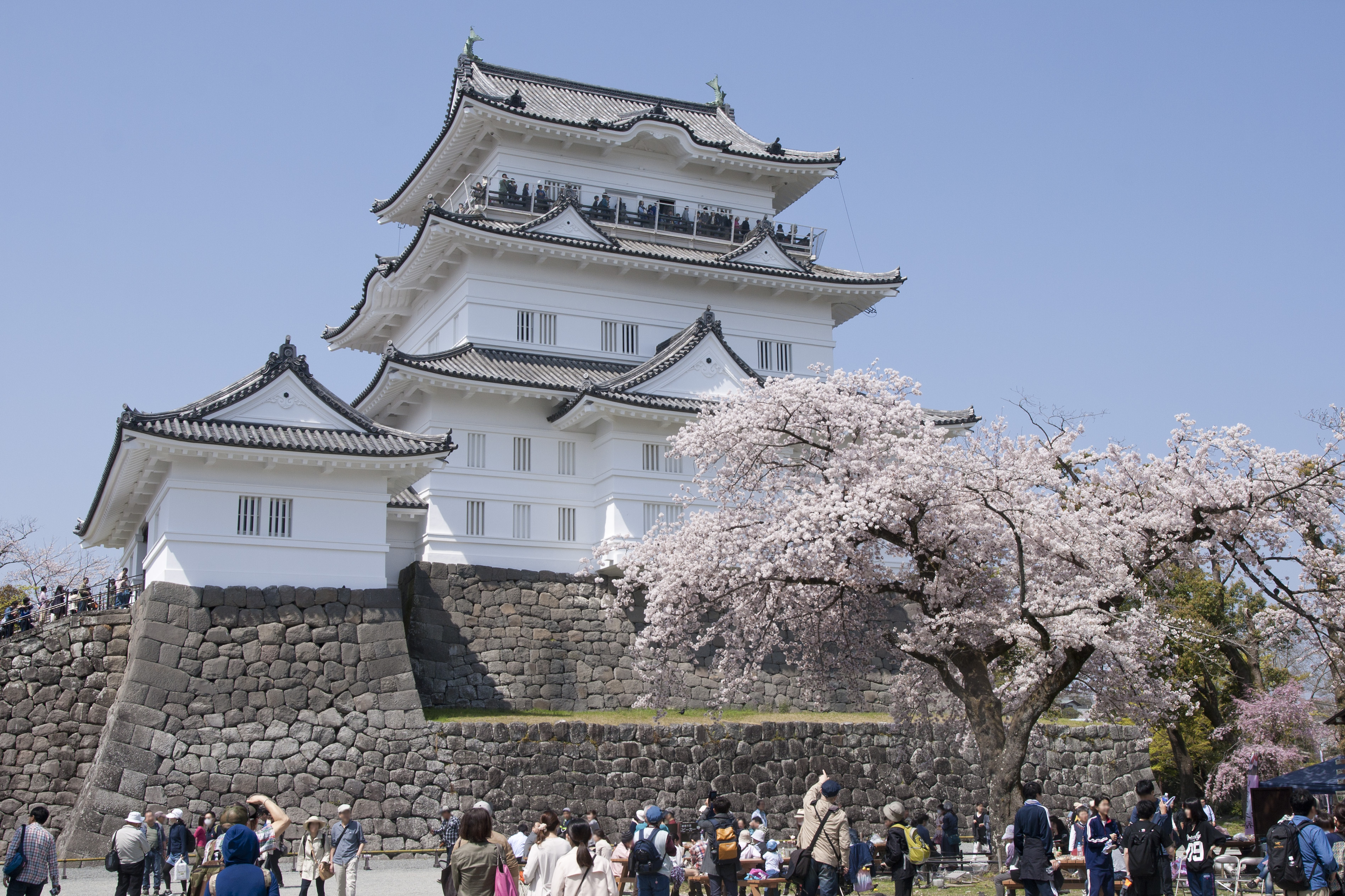|
Ishigakiyama Ichiya Castle
was a late Sengoku period Japanese castle in Odawara, Kanagawa Prefecture, Japan. It was one of the most famous among the castles built by Toyotomi Hideyoshi, and was the site of his first meeting with Date Masamune. Its ruins were designated a National Historic Site in 1959. History During the siege of Odawara in 1590, Toyotomi Hideyoshi built the castle to show his power and put pressure on the Late Hōjō clan. The castle is located on a hill named Kasagakeyama three kilometers west from Odawara Castle, which overlooked all of the Odawara's defenses. Although intended from the start as a temporary fortification, it was built with massive stone walls and a ''tenshu'' central keep. Hideyoshi was noted as both a master castle builder and a master of psychological warfare. It was constructed in secret in a wooded area over an 80 day period, so that when the trees were cut one night, the castle suddenly appeared. To the Hōjō defenders, it looked like the castle was built in jus ... [...More Info...] [...Related Items...] OR: [Wikipedia] [Google] [Baidu] |
Odawara
is a city in Kanagawa Prefecture, Japan. , the city had an estimated population of 188,482 and a population density of 1,700 persons per km2. The total area of the city is . Geography Odawara lies in the Ashigara Plains, in the far western portion of Kanagawa Prefecture at the southwestern tip of the Kantō region. It is bordered by the Hakone Mountains to the north and west, the Sakawa River to the east, and Sagami Bay of the Pacific Ocean to the south. Surrounding municipalities Kanagawa Prefecture * Minamiashigara * Ninomiya * Ōi, Kaisei, Nakai *Hakone, Hakone, Manazuru, Yugawara Climate Odawara has a humid subtropical climate (Köppen ''Cfa'') characterized by warm summers and cool winters with light to no snowfall. The average annual temperature in Odawara is 13.4 °C. The average annual rainfall is 2,144 mm with September as the wettest month. The temperatures are highest on average in August, at around 24.2 °C, and lowest in January, at around 2.9&nb ... [...More Info...] [...Related Items...] OR: [Wikipedia] [Google] [Baidu] |
Tenshu
is an architectural typology found in Japanese castle complexes. They are easily identifiable as the highest tower within the castle. Common translations of ''tenshu'' include keep, main keep, or ''donjon''. ''Tenshu'' are characterized as typically timber-framed, having multiple stories, being seated on ''ishigaki'' (dry stone) foundations, and having individual floors delineated by surrounding tiled eaves. Further, ''tenshu'' are typically decorated with varying patterns of dormer gables (''chidori-hafu''), and are capped with hip-and-gabled roofs (''irimoya-hafu'') with ''shachihoko'' finials. Not all Japanese castles originally possessed ''tenshu'' (e.g. Sendai)'','' many well-known castles have lost their ''tenshu'' (e.g. Nijō, Edo), many have had the ''tenshu'' rebuilt on multiple occasions (e.g. Nagoya, Osaka). While both the term, ''tenshu'' and the emergence of ''tenshu'' as a distinct architectural typology occurred in the 1560s and 1570s, the early relationship ... [...More Info...] [...Related Items...] OR: [Wikipedia] [Google] [Baidu] |
Historic Sites Of Japan
is a collective term used by the Japanese government's Law for the Protection of Cultural Properties to denote Cultural Properties of JapanIn this article, capitals indicate an official designation as opposed to a simple definition, e.g "Cultural Properties" as opposed to "cultural properties". as historic locations such as shell mounds, ancient tombs, sites of palaces, sites of forts or castles, monumental dwelling houses and other sites of high historical or scientific value; gardens, bridges, gorges, mountains, and other places of great scenic beauty; and natural features such as animals, plants, and geological or mineral formations of high scientific value. Designated monuments of Japan The government ''designates'' (as opposed to '' registers'') "significant" items of this kind as Cultural Properties (文化財 ''bunkazai'') and classifies them in one of three categories: * * , * . Items of particularly high significance may receive a higher classification as: * * * ... [...More Info...] [...Related Items...] OR: [Wikipedia] [Google] [Baidu] |
Castles In Kanagawa Prefecture
A castle is a type of fortified structure built during the Middle Ages predominantly by the nobility or royalty and by military orders. Scholars debate the scope of the word ''castle'', but usually consider it to be the private fortified residence of a lord or noble. This is distinct from a palace, which is not fortified; from a fortress, which was not always a residence for royalty or nobility; from a ''pleasance'' which was a walled-in residence for nobility, but not adequately fortified; and from a fortified settlement, which was a public defence – though there are many similarities among these types of construction. Use of the term has varied over time and has also been applied to structures such as hill forts and 19th-20th century homes built to resemble castles. Over the approximately 900 years when genuine castles were built, they took on a great many forms with many different features, although some, such as curtain walls, arrowslits, and portcullises, were ... [...More Info...] [...Related Items...] OR: [Wikipedia] [Google] [Baidu] |
List Of Historic Sites Of Japan (Kanagawa)
This list is of the Monuments of Japan, Historic Sites of Japan located within the Prefectures of Japan, Prefecture of Kanagawa. National Historic Sites As of 1 August 2019, sixty-three Sites have been Cultural Properties of Japan, designated as being of national Values (heritage), significance, including the Old Hakone Road, which spans the prefectural borders with Shizuoka Prefecture, Shizuoka. , - Prefectural Historic Sites As of 1 August 2019, twenty-five Sites have been designated as being of prefectural importance. Municipal Historic Sites As of 1 May 2019, a further one hundred and thirty-one Sites have been designated as being of municipal importance. Registered Historic Sites As of 1 August 2019, one Monument has been Cultural Properties of Japan#Categories of registered Cultural Properties, registered (as opposed to Cultural Properties of Japan, designated) as an Historic Site at a national level. ... [...More Info...] [...Related Items...] OR: [Wikipedia] [Google] [Baidu] |
Hayakawa Station
is a passenger railway station located in the city of Odawara, Kanagawa Prefecture, Japan, operated by the East Japan Railway Company (JR East). Lines Hayakawa Station is served by the Tōkaidō Main Line, and is located 86.0 kilometers from the line’s terminus at Tokyo Station. Station layout The station consists of a single island platform, connected to the station building by a footbridge. The platform is too short to accommodate trains longer than 15 cars in length, so a door cut system is employed.The station is attended. Platforms Station history Hayakawa Station first opened on December 21, 1922, when the section of the Atami-Odawara Line connecting Odawara with Manazuru was completed. From December 1, 1934 this became the Tōkaidō Main Line. Regularly scheduled freight services were discontinued in 1959, and parcel services by 1972. With the dissolution and privatization of the JNR on April 1, 1987, the station came under the control of the East Japan Railway ... [...More Info...] [...Related Items...] OR: [Wikipedia] [Google] [Baidu] |
Continued Top 100 Japanese Castles
The is a list of 100 Japanese castle, castles, intended as a sequel of 100 Fine Castles of Japan. The castles were chosen for their significance in culture, history, and in their regions by the in 2017. Hokkaidō region Tōhoku region Kantō region Kōshin'etsu region Hokuriku region Tōkai region Kansai region Chūgoku region Shikoku region Kyūshū region Okinawa region See also *List of castles in Japan *List of National Treasures of Japan (castles) Notes External linksJapan Castle Foundation {{Continued Top 100 Japanese Castles 100 Fine Castles of Japan, * Lists of castles in Japan ... [...More Info...] [...Related Items...] OR: [Wikipedia] [Google] [Baidu] |
Odawara, Kanagawa
is a city in Kanagawa Prefecture, Japan. , the city had an estimated population of 188,482 and a population density of 1,700 persons per km2. The total area of the city is . Geography Odawara lies in the Ashigara Plains, in the far western portion of Kanagawa Prefecture at the southwestern tip of the Kantō region. It is bordered by the Hakone Mountains to the north and west, the Sakawa River to the east, and Sagami Bay of the Pacific Ocean to the south. Surrounding municipalities Kanagawa Prefecture * Minamiashigara * Ninomiya * Ōi, Kaisei, Nakai *Hakone, Hakone, Manazuru, Yugawara Climate Odawara has a humid subtropical climate (Köppen ''Cfa'') characterized by warm summers and cool winters with light to no snowfall. The average annual temperature in Odawara is 13.4 °C. The average annual rainfall is 2,144 mm with September as the wettest month. The temperatures are highest on average in August, at around 24.2 °C, and lowest in January, at around 2.9& ... [...More Info...] [...Related Items...] OR: [Wikipedia] [Google] [Baidu] |
Psychological Warfare
Psychological warfare (PSYWAR), or the basic aspects of modern psychological operations (PsyOp), have been known by many other names or terms, including Military Information Support Operations (MISO), Psy Ops, political warfare, "Hearts and Minds", and propaganda. The term is used "to denote any action which is practiced mainly by psychological methods with the aim of evoking a planned psychological reaction in other people". Various techniques are used, and are aimed at influencing a target audience's value system, belief system, emotions, motives, reasoning, or behavior. It is used to induce confessions or reinforce attitudes and behaviors favorable to the originator's objectives, and are sometimes combined with black operations or false flag tactics. It is also used to destroy the morale of enemies through tactics that aim to depress troops' psychological states. Target audiences can be governments, organizations, groups, and individuals, and is not just limited to sold ... [...More Info...] [...Related Items...] OR: [Wikipedia] [Google] [Baidu] |
Odawara Castle
is a landmark in the city of Odawara in Kanagawa Prefecture, Japan. History Odawara was a stronghold of the Doi clan during the Kamakura period, and a fortified residence built by their collateral branch, the Kobayakawa clan, stood on the approximate site of the present castle. After the Uesugi Zenshū Revolt of 1416, Odawara came under the control of the Omori clan of Suruga. They were in turn defeated by Ise Moritoki of Izu, founder of the Odawara Hōjō clan in 1495. Five generations of the Odawara Hōjō clan improved and expanded on the fortifications of Odawara Castle as the center of their domains, which encompassed most of the Kantō region. During the Sengoku period, Odawara Castle had very strong defenses, as it was situated on a hill, surrounded by moats with water on the low side, and dry ditches on the hill side, with banks, walls and cliffs located all around the castle, enabling the defenders to repel attacks by Uesugi Kenshin in 1561 and Takeda Shingen ... [...More Info...] [...Related Items...] OR: [Wikipedia] [Google] [Baidu] |
Kanagawa Prefecture
is a prefecture of Japan located in the Kantō region of Honshu. Kanagawa Prefecture is the second-most populous prefecture of Japan at 9,221,129 (1 April 2022) and third-densest at . Its geographic area of makes it fifth-smallest. Kanagawa Prefecture borders Tokyo to the north, Yamanashi Prefecture to the northwest and Shizuoka Prefecture to the west. Yokohama is the capital and largest city of Kanagawa Prefecture and the second-largest city in Japan, with other major cities including Kawasaki, Sagamihara, and Fujisawa. Kanagawa Prefecture is located on Japan's eastern Pacific coast on Tokyo Bay and Sagami Bay, separated by the Miura Peninsula, across from Chiba Prefecture on the Bōsō Peninsula. Kanagawa Prefecture is part of the Greater Tokyo Area, the most populous metropolitan area in the world, with Yokohama and many of its cities being major commercial hubs and southern suburbs of Tokyo. Kanagawa Prefecture was the political and economic center of Japan du ... [...More Info...] [...Related Items...] OR: [Wikipedia] [Google] [Baidu] |
Late Hōjō Clan
Late may refer to: * LATE, an acronym which could stand for: ** Limbic-predominant age-related TDP-43 encephalopathy, a proposed form of dementia ** Local-authority trading enterprise, a New Zealand business law ** Local average treatment effect, a concept in econometrics Music * ''Late'' (album), a 2000 album by The 77s * Late!, a pseudonym used by Dave Grohl on his ''Pocketwatch'' album * Late (rapper), an underground rapper from Wolverhampton * "Late" (song), a song by Blue Angel * "Late", a song by Kanye West from ''Late Registration'' Other * Late (Tonga), an uninhabited volcanic island southwest of Vavau in the kingdom of Tonga * "Late" (''The Handmaid's Tale''), a television episode * LaTe, Oy Laivateollisuus Ab, a defunct shipbuilding company * Late may refer to a person who is Dead See also * * * ''Lates'', a genus of fish in the lates perch family * Later (other) * Tardiness * Tardiness (scheduling) In scheduling, tardiness is a measure of a delay in exe ... [...More Info...] [...Related Items...] OR: [Wikipedia] [Google] [Baidu] |










